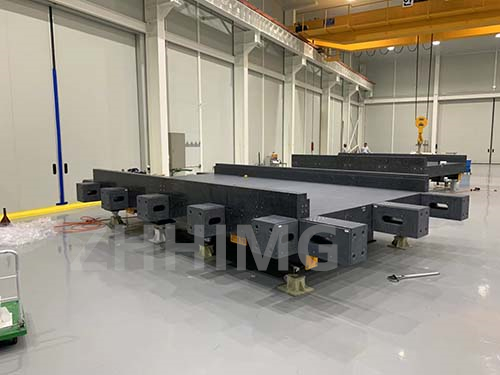Granite is an excellent material to use as a gas bearing for CNC equipment. The manufacturing process of granite gas bearings is quite involved, but it is worth the effort as a granite gas bearing provides added stability and precision to CNC equipment.
First, a block of granite is sourced. The block should be of high quality and free of any defects. Once a suitable block is found, it is cut into small sections, and the sections are then milled to rough dimensions.
After milling, the sections are then heated to over 2,000 degrees Fahrenheit to remove any internal stresses. The sections are then left to cool for several days to prevent any warping or cracking.
Next, the sections are machined to their exacting dimensions. The machined sections are then polished to ensure a smooth surface finish, which is crucial for optimal gas flow and bearing performance.
Once the sections are finished, they are assembled into a gas bearing. The assembly process involves setting the bearing to the proper tolerances, ensuring good gas flow and optimal bearing performance.
After assembly, the gas bearings are thoroughly tested to verify their performance. The bearings are checked for runout, stiffness, and other critical factors.
The manufacturing process of granite gas bearings is time-consuming and requires highly skilled workers to ensure high-quality results. However, the benefits that a granite gas bearing provides to CNC equipment make the time and effort worthwhile.
In conclusion, the manufacturing process of granite gas bearings for CNC equipment involves several steps, including milling, heating, machining, polishing, assembly, and testing. With proper manufacturing methods, granite gas bearings provide CNC equipment with added stability and precision.
Post time: Mar-28-2024

